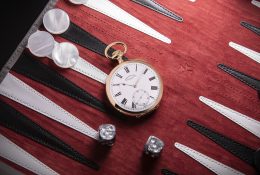The luxury industry will never be the same again. Conspicuous consumption is replaced by conscious consumerism. The customer experience is moving online. Gen Y and Z customers are king. From producing goods, brands have been given a new role producing and broadcasting content. The booming pre-owned market is redefining purchasing habits. As the second, and in some instances third, wave of coronavirus imposes continued lockdowns and restrictions, we are inundated with commentary, forecasts and predictions. Amongst these many and varied observations, one common denominator emerges: the inevitable transformation of the luxury industry. The question being, into what? as the ongoing crisis accelerates trends already at work. Latest figures and analyses go some way towards providing an answer.
Second-hand watches bring first-rate opportunities
Consultancy firm Bain & Co is a regular source of statistics and analysis for the sector, including a recent discussion on How Covid-19 Has Accelerated the Transformation in Luxury. It states how, as previously announced, the personal luxury goods market contracted by 23% in 2020 to €217 billion – a figure in line with the fall in Swiss watch exports between January and November 2020. This is the first drop since 2009 and the sharpest recorded in the 25 years that Bain & Co has been monitoring the sector.
Online luxury shopping is forecast to reach around €110 billion in 2025, accounting for 30% of the global market.
There is more insight on how sales have evolved online and in the markets. Bain & Co research shows that global online luxury purchases increased year-on-year by 50% from €33 billion in 2019 to an estimated €49 billion in 2020. Digital shopping now accounts for 23% of the market overall. And this is only the beginning, with online shopping forecast to reach €105-115 billion by 2025 to exceed 30% of the market, making digital the main channel for luxury purchases.
Three years to go
Turning to regional performance, China is the only country to have achieved growth in 2020 with a 45% increase in sales of personal luxury goods to reach €44 billion. Every other region of the world trailed negative figures, starting with Europe (-36%) and the Americas (-27%). Chinese consumers’ formidable appetite for luxury is expected to strengthen the country’s position as the world’s largest market for personal luxury goods. Bain & Co expects that by 2025 one out of two luxury products will be purchased in China. This raises the question of how the market will recover in the rest of the world and what the industry can look forward to overall. Bain’s analysis is that the market will return to 2019 levels (€281 billion) by end 2022 or early 2023. In the meantime, growth forecasts for 2021 range between 10-12% and 17-19% or a 15% average.
The actual scenario will, of course, depend on how successful countries are in stemming the coronavirus pandemic and the subsequent economic outlook. As a guideline, the International Monetary Fund, having predicted that world GDP will shrink by -4.4% in 2020, forecasts growth of 5.2% in 2021 and as much as 7.9% in China. Another question mark hovering over the luxury market is when will international travel resume. According to McKinsey, tourism can account for as much as 30% of luxury sales. A final factor concerns consumer behaviour in a post-lockdown environment. Will shoppers be the merry-making ant of Aesop’s fable or, like the grasshopper, will they choose to hold on to their hard-earned cash? Whatever the answer, the transformation of the luxury industry is underway.












